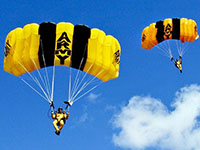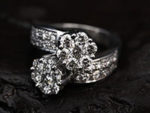 Businesses often have a need to make use of photographs as decorative art, for illustration, in connection with programs, events, or seminars, or for other purposes. For photographs not created by the respective business, the question arises whether photos from other sources can be used without first obtaining a license. The general answer is no.
Businesses often have a need to make use of photographs as decorative art, for illustration, in connection with programs, events, or seminars, or for other purposes. For photographs not created by the respective business, the question arises whether photos from other sources can be used without first obtaining a license. The general answer is no.
Trademark/IP
Embed at Your Own Risk, Says a New York Federal Court: Embedding Copyrighted Images on Your Website and Social Media May Lead to Charges of Copyright Infringement
 Does your business or publication link or embed copyrighted content on your website or social media? If you routinely do the latter, a recent decision in the U.S. District Court for the Southern District of New York suggests that the tide is turning to the former.
Does your business or publication link or embed copyrighted content on your website or social media? If you routinely do the latter, a recent decision in the U.S. District Court for the Southern District of New York suggests that the tide is turning to the former.
Although this holding is merely persuasive outside of the Southern District of New York, there is a possibility that other districts could adopt the same reasoning, finding businesses liable for violating a copyright holder’s right of display by embedding content from third-party servers.Continue Reading Embed at Your Own Risk, Says a New York Federal Court: Embedding Copyrighted Images on Your Website and Social Media May Lead to Charges of Copyright Infringement
Vegas Golden Knights Brand in Free-Fall?
 It looks like the Vegas Golden Knights will need their own parachute, in the form of a strong trademark attorney, to escape potential brand free-fall. While U.S. government agencies have not always been the most effective in policing trademark rights, it appears the Vegas hockey team is now in their sights.
It looks like the Vegas Golden Knights will need their own parachute, in the form of a strong trademark attorney, to escape potential brand free-fall. While U.S. government agencies have not always been the most effective in policing trademark rights, it appears the Vegas hockey team is now in their sights.
Earlier this month, the United States Army instituted trademark oppositions against two applications filed by the Las Vegas Golden Knights hockey team. The Army is alleging likelihood of confusion with the brand of its Golden Knights parachute demonstration team, as well as dilution and false suggestion of a connection.
The opposition is the culmination of a dispute that started with the unveiling of the NHL expansion team’s name in November 2016. At that time, the Army indicated it was evaluating the name for potential likelihood of confusion concerns; however, the NHL Golden Knights dived into their first season without changing the name.Continue Reading Vegas Golden Knights Brand in Free-Fall?
Trademark Law Gets Creative
 Want to be a trademark lawyer? Well, you might need to have a creative streak.
Want to be a trademark lawyer? Well, you might need to have a creative streak.
In recent weeks, at least two major brands have used attention-grabbing strategies to protect their trademarks while raising awareness about the unauthorized use of their intellectual property. And these efforts are generating more than a little buzz.
The Velcro Companies released a video, “Don’t Say Velcro,” in which an ensemble of dancing, singing trademark attorneys implores consumers not to use the Velcro brand’s name as a generic noun or verb to describe a product with “hook and loop” fasteners, or those “scratchy, hairy fasteners” that you find on Velcro shoes, gloves, and wallets. The video, which features mostly actors, but a few real lawyers, is part of a larger campaign designed to educate consumers about the brand and the proper use of its name.Continue Reading Trademark Law Gets Creative
Tiffany Setting the Standard
 Tiffany & Co., a world-renowned jeweler and specialty retailer, successfully won a judgment that Costco was appropriating its Tiffany® trademark. Federal Judge Laura T. Swain ordered Costco to pay Tiffany & Co. $19.4 million for trademark infringement and trademark counterfeiting under the Lanham Act, as well as unfair competition under New York state law, in the latest round in a long-running legal battle over the sale of engagement rings bearing the mark “Tiffany” as a standalone term. The decision reaffirms the strength of the Tiffany® trademark and will likely have a drastic effect on the way Costco and other wholesalers conduct business.
Tiffany & Co., a world-renowned jeweler and specialty retailer, successfully won a judgment that Costco was appropriating its Tiffany® trademark. Federal Judge Laura T. Swain ordered Costco to pay Tiffany & Co. $19.4 million for trademark infringement and trademark counterfeiting under the Lanham Act, as well as unfair competition under New York state law, in the latest round in a long-running legal battle over the sale of engagement rings bearing the mark “Tiffany” as a standalone term. The decision reaffirms the strength of the Tiffany® trademark and will likely have a drastic effect on the way Costco and other wholesalers conduct business.
The world-famous Tiffany® mark has been used in commerce in the United States since 1868. In 1886, Tiffany & Co. introduced an engagement ring that highlights the diamonds by lifting the stone off the band. This famous ring was named the Tiffany®. This six-prong configuration has been called the “Tiffany setting” by other jewelers.Continue Reading Tiffany Setting the Standard
Are You Prepared for the Legal Issues of Augmented Reality?
 Virtual reality (VR) and augmented reality (AR) are now considered mainstream technologies, and if your company is not yet using them, it will be.
Virtual reality (VR) and augmented reality (AR) are now considered mainstream technologies, and if your company is not yet using them, it will be.
AR has the ability to blur the lines between reality and computer-generated information, whereas VR is further along the spectrum of computer-generated content and involves the creation of an immersive, wholly computer-generated environment.
Both are known primarily for their use in recreation, most notably video games, though the technologies are also being incorporated into other industry sectors. Some argue AR will change the way we work, for example architects in various locations around the world may be able to, in real time and in 3D, manipulate the designs of buildings. And VR is already being used to train people in various industries, such as the military and medicine. Indeed, some experts believe that AR and VR will achieve widespread adoption in commercial applications well before either receives widespread consumer adoption for recreational purposes.Continue Reading Are You Prepared for the Legal Issues of Augmented Reality?
Supreme Court Strikes Lanham Act’s Disparagement Clause; Near-Term Effect Uncertain in Light of Other Viewpoint Based Prohibitions
 The U.S. Supreme Court ruled unanimously on June 19, 2017 that the Lanham Act’s disparagement clause prohibiting federal registration of “disparaging” trademarks unconstitutionally limits free speech in a case involving a band named “The Slants.” The near-term effect on trademark applicants, however, is in question due to other viewpoint based prohibitions that were not ruled upon.
The U.S. Supreme Court ruled unanimously on June 19, 2017 that the Lanham Act’s disparagement clause prohibiting federal registration of “disparaging” trademarks unconstitutionally limits free speech in a case involving a band named “The Slants.” The near-term effect on trademark applicants, however, is in question due to other viewpoint based prohibitions that were not ruled upon.
In this 8-0 decision, the U.S. Supreme Court found in favor of Simon Tam, the front man for Asian-American rock band The Slants, who had been denied a trademark because the U.S. Patent and Trademark Office deemed the name disparaging to people of Asian descent. The rock band challenged the denial as a violation of free speech rights under the First Amendment.Continue Reading Supreme Court Strikes Lanham Act’s Disparagement Clause; Near-Term Effect Uncertain in Light of Other Viewpoint Based Prohibitions
Copyright Considerations for using Emoji in Commercial Ads
Given the ubiquity of emoji, businesses have used them in commercial ad campaigns. Honda has used emoji in creative advertisements, releasing Aprils Fools’ ads in 2016 and again in 2017. Twentieth Century Fox created some buzz last year when it placed a billboard in Los Angeles advertising a movie release (guess which one) with the following message:

Translation: “Deadpool.” Adweek wrote an article entitled: “Deadpool’s Emoji Billboard Is So Stupid, It’s Genius.”Continue Reading Copyright Considerations for using Emoji in Commercial Ads
Golden Rules: Counterfeits and the Olympics
Demand for Olympic merchandise in the United States is resurrected every 4 years by the fervor of the televised Games. Officially, authorized and licensed gear is readily available in stores and on the Internet; however, every iteration of the Games brings with it a flood of counterfeit Olympic goods as well. The broadcasting of this year’s Olympics in Rio de Janeiro has, as expected, beckoned all sorts of counterfeit Olympic items to the U.S. market. From t-shirts illegally emblazoned with “Team USA”, to phony gold medals inscribed with the Olympic Rings. This blog post explores the laws that protect consumers and Olympics rights-holders in the United States from counterfeit Olympic goods.
Under 15 U.S.C. § 1127, a counterfeit is an article that includes unauthorized use of a logo, name, or other trademark that is “identical with, or substantially indistinguishable from” a registered trademark. The widely recognizable signs, symbols, and words affiliated with the Olympics, Paralympics, and Pan-American games are all registered trademarks. This includes, but is not limited to, the torch, the five interlocking rings, and the words “Team USA.”Continue Reading Golden Rules: Counterfeits and the Olympics
Golden Rules: Lowering the Uneven Bars on Likelihood of Confusion
With the opening ceremony for the Rio 2016 Olympic Games less than 1 month away, Olympic sponsors and non-sponsors alike are thinking about how they may be able to capitalize on the event’s popularity. Brands must, however, beware of using Olympic trademarks (as discussed in our previous blog post, Golden Rules: Wrestling with the Use of Trademarks), in large part, because of the relative ease with which Olympic rights-holders, such as the United States Olympic Committee (USOC), can take legal action. In the United States, under the Ted Stevens Amateur Sports Act (Ted Stevens Act), the USOC has exclusive rights to use “Olympic,” “Olympiad,” the interlocking rings, event mottos and other Olympic trademarks. The Ted Stevens Act also prohibits use of any word, symbol, or combination thereof that “tends to cause confusion or mistake, to deceive, or to falsely suggest a connection with the user and the Olympics”. In practice, this is a very broad prohibition.
For example, the interlocking ring design is a trademark owned and controlled by the USOC. Unauthorized use of the image of the rings is not permitted on the basis of copyright defenses, such as the public domain or fair use, despite popular misconceptions to the contrary. The rings, and other Olympic trademarks, including the word “Olympics,” are also not generic. Use of the word “Olympics” can be protected by free speech in narrow circumstances, but if you are an advertiser reading this blog, it’s highly unlikely that you will be able to fit your uses into that “protected speech” category, even if you can credibly claim that your use is expressive.Continue Reading Golden Rules: Lowering the Uneven Bars on Likelihood of Confusion